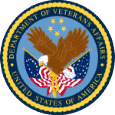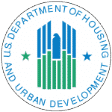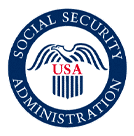In 2021, the Consolidated Appropriations Act appropriated $3.2 billion to the FCC to make broadband service more affordable for low-income households. As a temporary solution for the COVID-19 pandemic, the Emergency Broadband Benefit (EBB) program was a funding source for American families struggling to pay for internet service. The Infrastructure Investments and Jobs Act initiated the Affordable Connectivity Program (ACP), a permanent replacement for the Emergency Broadband Benefit program. Here, you will find information on both programs and their differences.
What Is the Emergency Broadband Internet Benefit Program?
The Federal Communications Commission (FCC) created an internet assistance program during the COVID-19 pandemic to help eligible households with the affordability of internet access. The EBB program assisted qualifying participants in connecting with jobs, schools for virtual classrooms, critical healthcare, and other essential services via the Internet. The emergency program provided a discount of up to $50 monthly for broadband services and up to $75 for those living on Tribal lands. Additionally, a benefit of $100 toward a device purchase, such as a laptop, tablet, or desktop computer, is available with a copay of $10.01 – $50.
Who Are the Participating Providers in the EBB Program?
There is a comprehensive list of providers that participate in the EBB (Broadband Benefit) program. Support available for fixed internet, mobile, or both may vary depending on your state or territory. The FCC offers a long list of providers and their services. This provider list provides comprehensive information about the cost per month, eligibility, and application processes.
Who is Eligible for the Emergency Broadband Internet Benefit Program?
For people who discover the website getemergencybroadband.org, “how to apply” and “am I eligible” are the first questions that come up. Although the EBB program has been sunsetted and replace by the ACP, eligibility requirements are very similar. To be eligible for the Federal Emergency Broadband Benefit program, you and your household must meet one of the criteria below:
- Participation in government assistance programs such as SNAP, Medicaid, or Lifeline, or household income at or below 135% of the Federal Poverty Guidelines
- A loss of income due to job layoff or loss since February 29, 2020, with household income for the year 2020 at or below $198,000 for those filing jointly and $99,000 for single filers
- Received a current year Federal Pell Grant
- Approval of benefits for the free or reduced-cost school meal programs for school years 2019-2022
- Qualification for a participating provider’s existing COVID-19 low-income program
What Is the ACP Program?
The Affordable Connectivity Program is a permanent solution for the pre-existing Emergency Broadband Benefit program, with a few differences. For qualifying applicants, ACP offers a monthly discount of up to $30 for broadband services. It is less than the EBB discount of $50, but $75 for those living on Tribal lands is unchanged. The ACP still offers the same $100 discount for a device purchase with the same copay of $10.01 – $50 that the EBB provided. Both programs are limited to one per household.
How Long Do Emergency Broadband (EBB) Benefits Last?
The Emergency Broadband Benefit program to help those in need during COVID-19 is available for six months after the declaration of the end of the pandemic. The ACP officially replaced the EBB program on December 31, 2021
What Are the New Eligibility Requirements for the Affordable Connectivity Program?
The ACP program allows families and households with an income of up to 200% of the national poverty level eligibility for assistance. It is a significant difference from the EBB requirement of up to 135%. For example, a household of three with an income of up to $44,000 now qualifies for the Affordable Connectivity Program. If you are eligible for the EBB and ACP, there is an automatic conversion for the new program. It is important to note that some households unemployed due to COVID-19 and eligible for the Emergency Broadband Program may not qualify for the new plan.
How to Apply for the ACP Program
To enroll in the program, complete an ACP application online at AffordableConnectivity.gov or through a service provider’s website such as assistwireless.com. Printing the application and sending it in by mail is also an option. Before you submit your application, you must provide official documentation proving your eligibility. Documents must include the following:
- Name of the qualifying program, such as SNAP, WIC, SSI, etc.
- Name of the government, Tribal entity, or program that issued the document
- Document issue date
- Names of household members and dependents
A benefit award letter, school document, verification statement, or benefits letter is a requirement for new applications.
Enroll in the New ACP Emergency Broadband Internet Benefit Program Today
The new ACP emergency internet benefit program makes it possible to find an affordable internet plan that is right for you. Go to www.assistwireless.com/about-acp/ for more details on the best devices and ACP service plans available. We have the resources you need to stay connected!
www.usac.org/about/affordable-connectivity-program/
https://www.usac.org/about/emergency-broadband-benefit-program
https://www.fcc.gov/broadbandbenefit
https://www.fcc.gov/emergency-broadband-benefit-providers
https://www.fcc.gov/lifeline-consumers
https://www.hhs.gov/about/news/2023/02/09/fact-sheet-covid-19-public-health-emergency-transition-roadmap.html
https://www.affordableconnectivity.gov/







